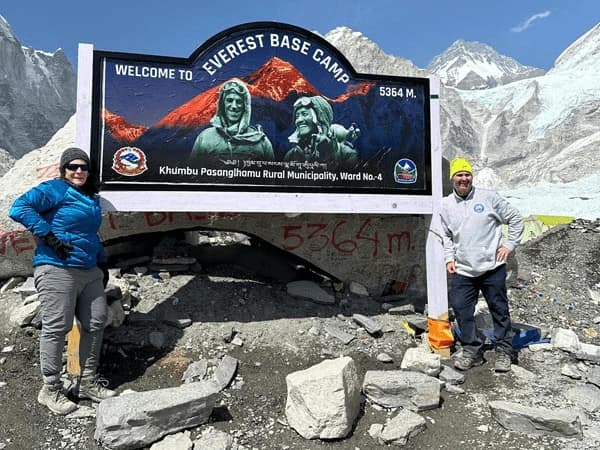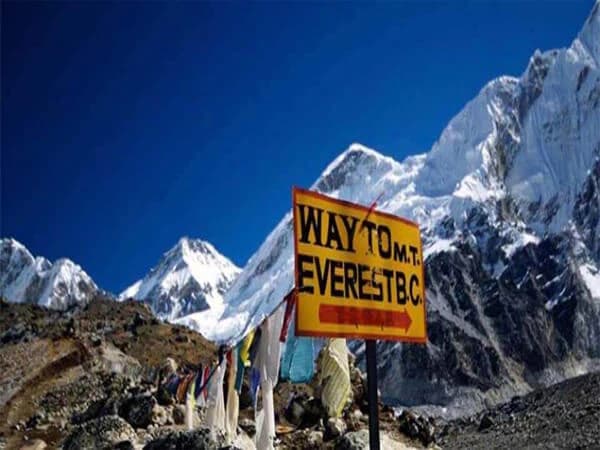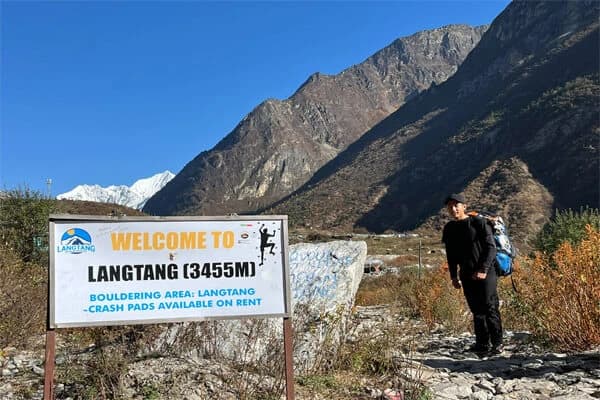Many people wanting to visit the Everest region frequently ask, "How hard is the Everest Base Camp Sleeping Trek?" The answer is dependent on your physical level, trekking experience, and planning. This trek takes the typical EBC trekking route to an elevation of 5,364 meters, but with the extra benefit of "sleeping" in well-managed lodges and teahouses each night. It is intended for trekkers who wish to fully immerse themselves in the Everest experience while relaxing after long days of walking.
While it is not a technical climb, the challenge comes from the high altitude, lengthy walking hours (5-7 hours per day), and steep sections on rocky routes. Acclimatization and steady climb are critical components in making the trek manageable. Even beginners with good physical fitness can complete it safely with the right preparation and assistance.
The adventure rewards you with stunning views of Mount Everest, Lhotse, and Ama Dablam, as well as cultural experiences in Sherpa communities. It is both physically challenging and deeply uplifting, testing endurance while providing unparalleled Himalayan splendor. In this article, we will look at the Everest Base Camp Sleeping Trek difficulty, what to expect, and how to prepare for one of the world's most famous trekking excursions.
Everest Base Camp Sleeping Trek difficulty level
The difficulty level of the Overnight at Everest Base Camp Trek is generally rated moderate, making it ideal for trekkers with basic fitness and trekking experience. The journey consists of daily treks lasting 5-8 hours on well-marked trails that gradually increase to a maximum altitude of 5,364 meters at Everest Base Camp. While no technical climbing abilities are necessary, altitude and extensive walking distances are physically demanding. Acclimatization, rest days, and light training are necessary for managing fatigue and avoiding altitude sickness. The walk mixes Himalayan adventure with cultural experiences in Sherpa settlements, making it a manageable but enjoyable expedition for first-time high-altitude trekkers.
Physical fitness for Everest Sleeping Trek
Although the Everest Base Camp Sleeping Trekking is not a challenging climb, it does need a reasonable level of physical endurance and stamina. Trekkers travel for several hours each day, typically on steep and rough terrain with significant elevation gain as they near Everest Base Camp. Let us look at what kind of preparation helps make the journey safe and pleasurable.
Basic Fitness and Endurance
You do not have to be an athlete to finish the Everest Base Camp Sleeping Trek, but reasonable fitness is required. Trekkers should be able to walk 5-7 hours per day with a lightweight backpack. Because the trails contain both high ascents and descents, endurance training, such as regular walking, trekking, or cycling, prepares your body for lengthy periods of time on your feet. Increasing leg strength and cardiovascular fitness lowers weariness, particularly at higher elevations where oxygen levels drop.
Training Before the Everest Base Camp Sleeping Trek
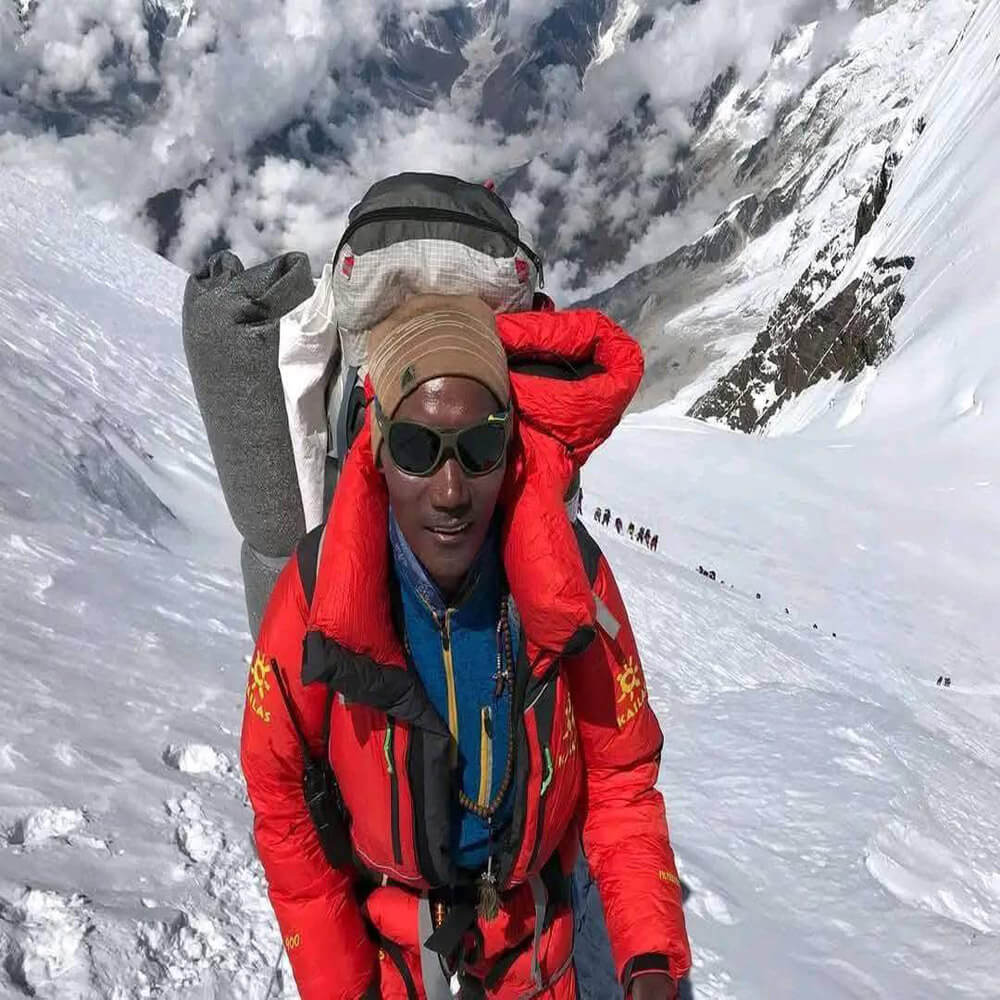
Preparation should begin 6-8 weeks before the trek. A combination of cardio workouts (such as jogging, swimming, or stair climbing) with strength training (with a focus on the legs, back, and core muscles) improves stamina and balance. Trekking with a backpack simulates real-world trekking circumstances. Long walks on hilly or uneven ground can also help prepare your joints and muscles for the Himalayan environment.
Mental Preparedness for EBC Sleeping Trekking
Physical strength is not enough; mental endurance is equally important. Patience, tenacity, and a cheerful attitude are required throughout the trek, particularly when fatigue or altitude issues develop. Setting small daily goals, staying hydrated, and keeping a consistent pace all help to keep energy and motivation up throughout the journey.
Who Can Join the Overnight at Everest Base Camp Trek?
The Everest Base Camp Sleeping Trek is ideal for fit beginners, families with older children, and experienced trekkers looking to see the Everest region without difficulties. Even first-time trekkers can complete it successfully with adequate planning, acclimatization, and direction from competent local guides.
A high level of physical and mental fitness makes this experience more gratifying and pleasurable. Trekkers who train early and maintain a consistent pace can meet adversities with confidence and thoroughly appreciate the adventure.
Everest Sleeping Trek Altitude Challenges
The Everest Base Camp Sleeping Trek leads trekkers deep into the Khumbu region, gradually ascending from Lukla to Everest Base Camp (5,364m). The high altitude is one of the journey's key problems. As the air thins, the body obtains less oxygen, which can cause symptoms of acute mountain sickness (AMS) such as headache, weariness, dizziness, and shortness of breath. Even though the trek does not entail technical climbing, the altitude can make plain walking more difficult especially over 4,000 meters.
The path travels through numerous important high-altitude locations, including Namche Bazaar (3,440m), Tengboche (3,860m), Dingboche (4,410m), and Lobuche (4,910m). The higher you go, the more your body needs to acclimate. Walking slowly, staying hydrated, and avoiding steep ascents are critical for reducing dangers. Proper acclimatization days particularly in Namche and Dingboche are included to assist your body acclimate before ascending. With patience, relaxation, and instruction from competent trekking leaders, most trekkers can reach Everest Base Camp without incident.
Acclimatization and Sleep on Everest Sleeping Trek
Acclimatization is critical in dealing with the Everest Sleeping Trek altitude challenges. The "sleeping trek" format allows trekkers to rest each night in comfortable lodges or teahouses, which aids recovery and improves oxygen adjustment. Spending nights at increasingly higher elevations trains your body to gradually adapt, significantly lowering your risk of altitude sickness. Sleeping, however, might be difficult at higher altitudes. As oxygen levels drop, some trekkers report light sleep, frequent awakening, or minor headaches at night. That is why rest days in Namche Bazaar and Dingboche are critical, not just for exploring nearby viewpoints, but also for allowing your body to stabilize before pushing higher. Avoiding alcohol, eating light meals, and drinking warm fluids all help improve sleep quality.
The itinerary for the Everest Base Camp Sleeping Trek is meticulously planned to guarantee safe acclimatization without hurrying the ascent. Every walk and rest day helps the body adjust. Trekkers can successfully manage altitude issues while admiring the spectacular Himalayan scenery by walking slowly, breathing deeply, and sleeping well.
Trail Conditions and Terrain on the Everest Base Camp Sleeping Trek
The Everest Base Camp Sleeping Trekking covers one of the Himalayas' most spectacular and well-trodden treks. Despite its popularity, the route provides various hurdles in terms of altitude, topography, and stamina. Understanding the path conditions allows trekkers to prepare psychologically and physically for what lies ahead.
Rocky and Uneven Paths
The trail to Everest Base Camp Hiking is rugged and natural, passing through rocky steps, forested trails, and glacial moraines. The lower sections are shadowed by pine and rhododendron trees, with occasional stone-paved roads past Sherpa communities. As trekkers climb higher, particularly beyond Dingboche, the terrain becomes more barren and rocky, making footing more difficult. A sturdy pair of trekking boots and poles are required to properly cross these uneven trails.
Suspension Bridges and Steep Climbs
Trekkers will cross several long suspension bridges that hang high above roaring rivers such as the Dudh Koshi. These crossings can be exciting but sometimes a little daunting for first-timers. The journey includes steady ascents, particularly from Phakding to Namche Bazaar and Tengboche to Dingboche. These climbs demand stamina and leg power, but the panoramic mountain views at each turn make it worthwhile.
High-Altitude Walking Conditions
As you climb above 4,000 meters, oxygen levels begin to plummet, making even short ascents feel more difficult. The routes are steeper and dustier, particularly near Lobuche and Gorak Shep. At this altitude, trekkers must keep a slow, steady pace and water frequently. Rest days for acclimatization in Namche and Dingboche are critical to avoiding altitude sickness and maintaining energy levels.
Sleeping Comfort and Recovery
The "Base Camp sleeping trek" feature refers to trekkers staying in luxurious hotels and teahouses each night. While this provides better relaxation and recovery than overnight treks, the facilities get simpler as altitude climbs. Warm dining halls, pleasant lodgings, and nourishing meals help to replenish strength after long trekking days, making the endeavor more feasible.
Overall, the Everest Base Camp Sleeping Trek difficulty is not technical climbing, but rather enduring lengthy days of trekking across different landscapes and adjusting to altitude. With preparation, pacing, and professional guidance, the journey becomes a rewarding blend of physical challenge and Himalayan wonder.
Everest Sleeping Trek weather
The EBC Sleeping Trek difficulty is directly related to the region's weather patterns. The weather in the Himalayas can change swiftly, making each season unique and challenging. Conditions are most favorable from March to May and September to November. The days are warm enough for trekking, the skies are clear, and the vistas of Everest and the surrounding peaks are stunning. These constant circumstances make the trek more enjoyable and lessen weather-related hazards such as snow, rain, and trail obstructions.
However, the winter months (December to February) bring frigid temperatures, particularly above Namche Bazaar. While the sky is clear, evenings might drop to -15°C, compounding the hardship. Trails can become snow-covered, and some lodges at higher elevations may close for the season. Trekkers who love isolation may enjoy winter's peaceful paths, but they must be prepared for intense cold and few services.
The monsoon season (June to August) is the most difficult time to trek because of the heavy rain, slippery paths, and poor visibility. Leeches, landslides, and flight delays are common, making this route less than ideal. Proper waterproof clothes and extra days for travel are required during this time.
Best Time for Sleeping Trek to Everest Base Camp
The EBC trek with overnight stays is best done in the spring and autumn, when the weather, trail conditions, and scenery are all in perfect harmony. Spring (March to May) brings blooming rhododendrons, colorful woods, and mild temperatures, making it ideal for photography and high-altitude treks. It is also the pre-monsoon climbing season, so trekkers frequently see climbers preparing for Mount Everest climbs, creating an exciting mood along the way.
The monsoon rains in autumn (September to November) have cleaned the air of dust, allowing for crystal-clear vistas of the Himalayas. The temperatures are colder but more comfortable, and tea houses are fully operational, ensuring adequate lodging and meals. These months offer the most consistent trekking weather, making them suitable for both novices and expert trekkers.
Winter and rainy seasons are still manageable for well-prepared trekkers, but spring and autumn stand out for their safety, comfort, and natural beauty. To make the most of these conditions, trekking with our company, Nepal Trekking Routes ensures safety, proper guidance, and a memorable Himalayan experience throughout your sleeping trek to Everest Base Camp.
Duration and Daily Walking Hours on the Everest Base Camp Sleeping Trek
Understanding the duration and daily walking hours before embarking on the Sleeping in Everest Base Camp helps trekkers set realistic expectations. This is not a rushed excursion; instead, it is a well-paced adventure that allows your body to adjust to altitude while taking in the grandeur of the Khumbu region.
Average Walking Hours for Everest Sleeping Trek
During the Everest Base Camp Overnight Trek, trekkers average 5 to 8 hours of walking per day. The trail includes a wide range of topography, from moderate ascents through pine forests to steep rises around Namche Bazaar and beyond. The first few days are pretty easy as you go from Lukla to Phakding and Namche Bazaar, letting your body gradually adjust. Once you cross Namche and ascend toward Tengboche, Dingboche, and Lobuche, the pace slows and becomes more methodical. At these elevations, oxygen levels decline, so pace yourself. Acclimatization days are included in the schedule at Namche Bazaar and Dingboche, where you do shorter treks to nearby overlooks but return to the same lodge to sleep. This method reduces the risk of altitude sickness in EBC sleeping Trek, while also making the walk more enjoyable. The total trekking time normally spans between 12 and 14 days, depending on your itinerary, physical level, and weather conditions.
Overnight at Everest Base Camp
The "sleeping" portion of this trek refers to overnight stays at comfortable teahouses or lodges along the way. Unlike camping treks, which include sleeping in tents, the Everest Base Camp Sleeping Trek provides comfortable accommodations with essential conveniences such as warm beds, blankets, and home-cooked meals. This makes the journey more relaxing and allows trekkers to recover energy for the next day's walk.
Before arriving at Everest Base Camp, you will spend each night in a different hamlet, including Phakding, Namche Bazaar, Tengboche, Dingboche, Lobuche, and Gorak Shep. These teahouses also provide a social environment in which trekkers from all over the world may share stories over cups of tea.
Sleeping at higher elevations can be difficult owing to thinner air, so stay hydrated and warm. Proper rest is essential for successfully finishing the trek. In essence, the Everest Base Camp sleeping Trek is a balance of exertion and recovery trekking long hours by day and resting well at night a cadence that transforms endurance into an unforgettable Himalayan adventure.
Sleeping Conditions on Everest Trek
Sleeping conditions at the Everest Base Camp Sleeping Treks play an important role in the whole trekking experience. Unlike high-altitude climbs, which require camping, this journey allows trekkers to rest in teahouses and hotels along the way, providing a more comfortable and safe experience. Most teahouses have modest twin or triple rooms with common or private bathrooms, minimal linen, and heating in the cooler months. Rooms may be modest and rustic, but they provide a much-needed spot to unwind after long days of wandering.
At higher elevations, facilities may become more basic. Hot showers are frequently available for a small fee, and electricity may be scarce, so bring a headlamp and a portable power bank. Tea, snacks, and meals are easily available, and the lodges frequently act as social hubs for trekkers, resulting in a friendly atmosphere despite the isolated location.
Sleeping at altitude can be difficult due to the thinner air and cooler evenings, so layered bedding and warm clothing are important. Staying hydrated and following acclimatization standards also enhances sleep quality. Overall, the teahouse system makes the Everest Sleeping Trek more accessible, allowing trekkers to explore the Himalayas in safety and comfort while taking in the stunning scenery and local hospitality.
Tea House Accommodation and Trek Difficulty
Tea House Trekking Everest Base Camp
Trekking to Everest Base Camp via tea houses is one of the most popular ways to see the area. Tea house trekking eliminates the physical and logistical problems of camping, allowing trekkers to spend each night pleasantly in basic lodges. The pathways are well-marked, and hotel options at each stop make daily distances more reasonable. While the journey still requires long hours of trekking and high-altitude conditions, having a roof over your head and meals provided greatly reduces the difficulty, making it appropriate for beginners and somewhat experienced trekkers.
Everest Base Camp Trek Accommodation
Accommodations along the path range from basic to moderately comfortable. Most tea houses offer twin or triple rooms with minimal bedding, common toilets, and inadequate heating. At higher elevations, amenities may be more rustic, yet they provide necessary shelter, food, and warmth. Meals are offered in communal dining spaces, allowing trekkers to interact and share their experiences. Electricity and Wi-Fi are frequently provided for a modest cost, while hot showers may be scarce at higher elevations. Despite the limited amenities, tea house accommodations make the walk more accessible and safe than self-supported camping.
High-Altitude Sleeping Everest Base Camp Trek
Sleeping at high altitudes has extra obstacles, such as thinner air, cooler temperatures, and the possibility of altitude-related weariness. Tea house accommodation helps trekkers to rest and thoroughly acclimatize, which is essential for avoiding altitude sickness. Layered bedding, warm clothing, and maintaining hydration are essential for a comfortable night’s sleep. Staying in lodges also provides mental comfort, as trekkers can recover in a secure environment before the next day’s long trek.
Everest Base Camp Trek Itinerary with Lodging
The Everest Base Camp trek itinerary with lodging normally lasts 12-14 days and provides a mix of adventure, acclimatization, and comfort. Most trekkers begin at Lukla, a short flight from Kathmandu. From there, the adventure continues with an easy trek to Phakding, where the first tea house provides a comfortable night's rest. Daily walking hours range from 5-7 hours, with the altitude steadily increasing to aid acclimatization.
The trek takes you through lovely Sherpa settlements like Namche Bazaar, Tengboche, Dingboche, and Lobuche, where tea houses or lodges provide simple rooms, communal meals, and basic utilities. Hot showers and power are occasionally offered for a price. These pauses allow trekkers to rest, eat, and acclimate to higher elevations, lowering their risk of altitude sickness.
The final approach to Everest Base Camp is spectacular, with tea house accommodations in Gorak Shep before summiting the camp itself. Staying overnight at lodges makes the trek more manageable than camping by offering warmth, meals, and a safe place to rest. The tea house system allows trekkers to appreciate the stunning Himalayan environment, local culture, and the amazing sense of accomplishment of reaching Everest Base Camp.
Everest Base Camp Trek Day-by-Day Plan
The Everest Base Camp (EBC) trek is a classic Himalayan adventure that typically spans 12–14 days, offering a gradual ascent to high altitude while allowing for acclimatization and cultural experiences.
Day 1: Fly from Kathmandu to Lukla (2,860m) and trek to Phakding (2,610m).
Day 2: Trek from Phakding to Namche Bazaar (3,440m), the main Sherpa hub, crossing suspension bridges and scenic rivers.
Day 3: Acclimatization day in Namche Bazaar; short treks to Everest View Hotel or nearby villages.
Day 4: Trek from Namche Bazaar to Tengboche (3,860m), visiting the famous Tengboche Monastery and enjoying panoramic Himalayan views.
Day 5: Trek to Dingboche (4,410m), passing Pangboche village and observing Ama Dablam and other peaks.
Day 6: Acclimatization day in Dingboche; short treks to Nangkartshang Peak or surrounding areas.
Day 7: Trek to Lobuche (4,940m), navigating rocky terrain and glaciers.
Day 8: Trek to Everest Base Camp (5,364m) via Gorak Shep (5,164m); optional trek to Kala Patthar (5,545m) for sunrise views.
Day 9–12: Return trek via the same route, stopping in Tengboche and Namche Bazaar before reaching Lukla.
This day-by-day plan balances trekking, acclimatization, and cultural experiences, making it achievable for moderately fit adventurers seeking the ultimate Himalayan journey.
Comparison with Other Everest Treks
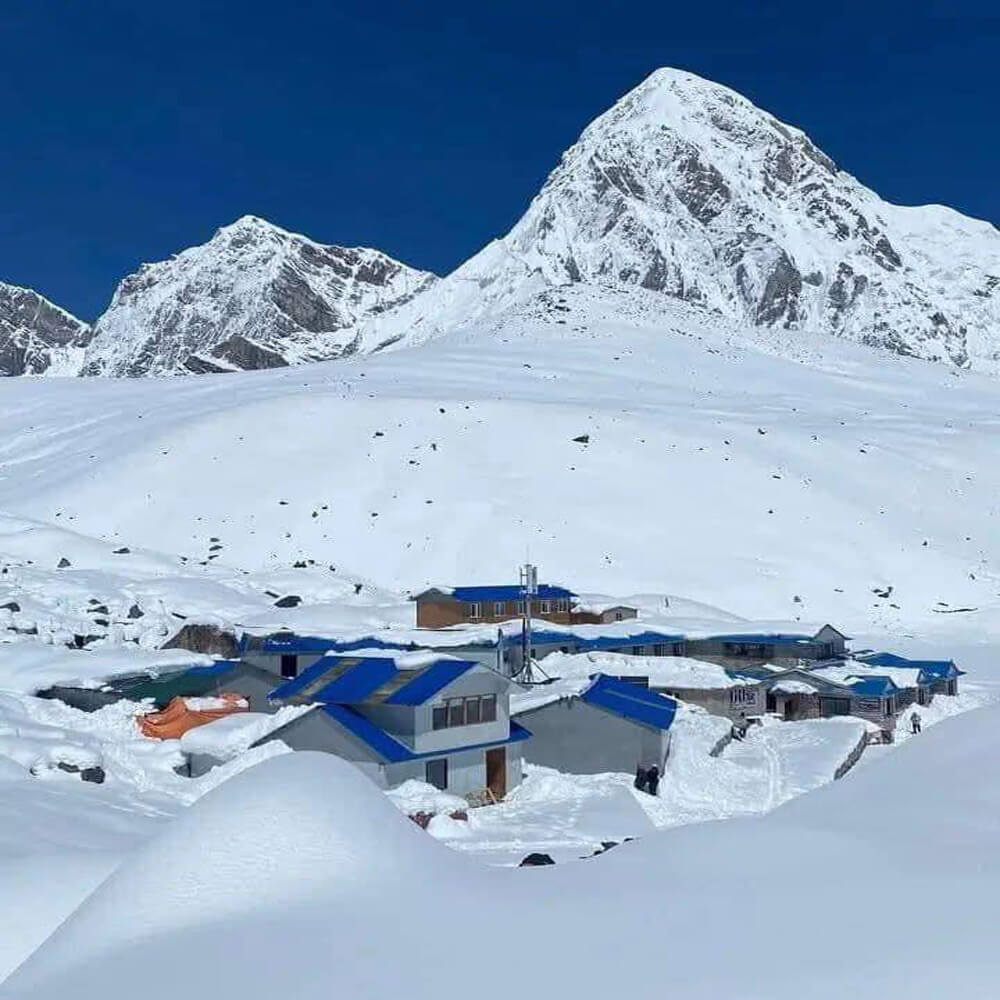
It is useful to compare the Everest Base Camp Sleeping Trek difficulty to other popular trekking alternatives in the Everest region. The Everest experience varies in terms of its challenges, comforts, and rewards. Let us see how the sleeping journey stacks up versus others.
Classic Everest Base Camp Trek
The Clasic Everest Base Camp trek has a similar route and elevation profile as the sleeping trek. The biggest distinction is in the lodging experience and trekking style. Both routes reach an altitude of 5,364 meters and take approximately 12-14 days. However, on the sleeping trip, trekkers benefit from well-managed teahouses with nicer bedding, meals, and rest facilities, which assist minimize weariness. This reduces the overall difficulty slightly from the conventional edition, as excellent sleep and comfort play an important part in maintaining energy levels at high elevations.
Everest Base Camp Trek with Helicopter Return
The Everest Base Camp trek with helicopter return provides a similar physical challenge during the ascent while replacing the long, arduous descent with a helicopter ride down to Lukla. This option is perfect for trekkers who want to save time or skip extra days of trekking. In comparison, the overnight at EBC requires both ascent and descent on foot, increasing endurance difficulties while also delivering a more complete trekking experience across the Khumbu Valley.
Luxury Everest Base Camp Trek
The Luxury Everest Base Camp Trek emphasizes high-end accommodations, finer cuisine, and more customized services. While the path and altitude remain unchanged, the added comfort and support make the journey more physically and mentally manageable. The sleeping trek provides a similar experience at a more reasonable cost, combining comfort and adventure. It is great for trekkers looking for a mix of traditional Himalayan trekking and comfortable accommodations.
Gokyo Lake and Cho La Pass Trek
Compared to the Gokyo Cho La Pass trek, the sleeping trek is much easier. The Gokyo trek route features severe glacier crossings, high mountain passes exceeding 5,300 meters, and longer treks. The overnight trek, on the other hand, takes a more direct path with less technical challenges and risks, making it ideal for beginners.
In short, the Everest Base Camp Sleeping Trek is somewhat difficult, it is easier than high-pass treks but significantly more hard than comfort-oriented helicopter or luxury variants. It is an excellent choice for trekkers seeking both adventure and relaxation.
Safety and Preparation Tips for Everest Base Camp Sleeping Trek Difficulty
Trekking to Everest Base Camp is a dream for many people, but understanding the safety precautions and planning thoroughly can mean the difference. The Everest Base Camp Sleeping Trek difficulty becomes much more doable when you take the necessary precautions before and during your trek.
Physical and Mental Preparation
Before traveling to the Everest region, trekkers should work on boosting their cardiovascular endurance, leg strength, and stamina. Simple exercises, such as trekking, jogging, or cycling three to four times per week for at least two months before the walk, can assist establish the essential fitness. Mentally prepare for long walks, variable weather, and high altitudes. Staying positive and patient is essential for overcoming difficult days on the trail.
Importance of Acclimatization
High altitude is the primary element influencing trek difficulty. The plan includes respite days, particularly in Namche Bazaar and Dingboche, to allow your body adjust to the thin air. Drinking plenty of water, avoiding alcohol, and gradually ascending lowers the risk of altitude sickness. Pay attention to your guide and notice early symptoms like headaches or dizziness.
Essential Gear and Packing Tips
Proper clothing and equipment are essential for safety and comfort. Layered clothing allows you to adapt to temperature variations, while robust trekking boots avoid blisters and ankle strain. Always pack first-aid supplies, water purification tablets, sunscreen, and energy snacks.
Guided Support and Insurance
Trekking with skilled guides and porters improves safety and enjoyment. They assist with route planning, health monitoring, and logistical management. Comprehensive travel insurance that covers high-altitude trekking is important in case of an emergency.
By following these safety and preparation advice, you will be able to confidently tackle the Everest Base Camp Sleeping Trek difficulty and have a pleasant Himalayan journey.
Everest Sleeping Trek for beginners
The Everest Sleeping Trek for Beginners is intended to provide a Himalayan experience without the strenuous requirements of higher-altitude excursions such as the classic Everest Base Camp trek. This trek is classified as a beginner-friendly Everest Base Camp trek, making it suitable for anyone with moderate fitness and a willingness to walk for several hours per day. Unlike technical climbing peaks or high-altitude expeditions, the sleeping trek does not require any mountaineering experience or specialized equipment beyond basic trekking gear, making it ideal for both first-time trekkers and adventure seekers.
One of the primary benefits for beginners is the presence of well-kept lodges and teahouses along the way. Trekkers can sleep comfortably each night, eat hot meals, and recover for the following day's walk. The daily walking hours are manageable, typically ranging from 5-7 hours, and the trail is gentle, with clear trails and signposts. This makes the Everest Sleeping Trek for beginners safe and fun, while also providing a sense of accomplishment as trekkers reach Everest Base Camp.
The trek also includes progressive acclimatization, which is necessary for first-timers to adjust to high altitudes without risking Acute Mountain Sickness. Beginning in Lukla, trekkers pass through legendary Sherpa communities such as Namche Bazaar and Tengboche, acquiring cultural insights and breathtaking Himalayan views.
Overall, a beginner-friendly Everest Base Camp trek delivers adventure, cultural exposure, and breathtaking scenery in a reasonable package. With proper planning, moderate fitness preparation, and guidance from experienced operators like Nepal Trekking Routes, even first-time trekkers can safely and confidently complete this unforgettable Himalayan journey, making it one of the most recommended entry-level treks in Nepal.
Frequently Asked Question
How difficult is the Everest Base Camp Sleeping Trek?
The Everest Base camp sleeping trek is considered moderate in difficulty. It involves daily walking of 5–8 hours, gradual ascents, and maximum altitude of 5,364 meters. No technical climbing skills are required, but trekkers should have basic fitness and stamina.
Do I need prior trekking experience?
While prior experience helps, it’s not mandatory. Beginners can complete the trek safely with proper preparation, acclimatization, and guidance from experienced operators.
How does altitude affect the difficulty?
Altitude is the main challenge. Acclimatization days at Namche Bazaar and Dingboche help reduce the risk of altitude sickness. Proper pacing, hydration, and rest are crucial.
Can families or older trekkers do this trek?
Yes, the moderate difficulty level makes it suitable for families and older trekkers, provided they maintain fitness and follow acclimatization guidelines.
How does the EBC sleeping trek differ from a regular EBC trek?
The EBC sleeping trek allows overnight stays in Tent at Everest Base Camp,but regular EBC trek allows you to stay teahouses along the route, providing comfort and reducing fatigue. This makes the trek more manageable and less physically demanding while still offering full Himalayan experiences.
Conclusion: Everest Base Camp Sleeping Trek difficulty
The Everest Base Camp Sleeping Trek difficulty is moderate, making it suitable for fit beginners, adventure seekers, and nature enthusiasts looking to experience the Himalayas without technical climbing. While the trek requires long walking days, gradual ascents, and exposure to high altitudes, adequate acclimatization, timing, and physical preparation make it possible.
The convenience of resting in teahouses along the way lessens weariness and lets trekkers to rest each night. Seasonal weather and trail conditions may present small problems, but overall this is a feasible and rewarding adventure. For a safe, well-organized, and unforgettable vacation, plan with our experienced local operator, Nepal Trekking Routes. We provide expert instruction, permits, and assistance throughout the trek.




